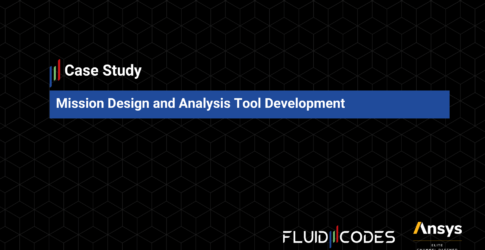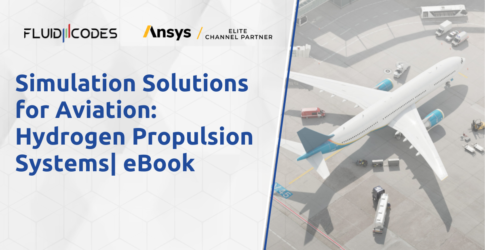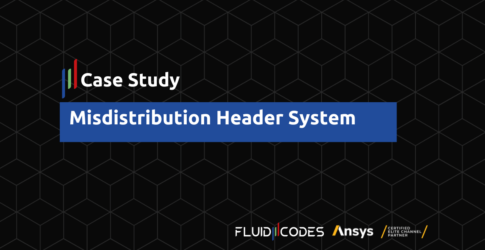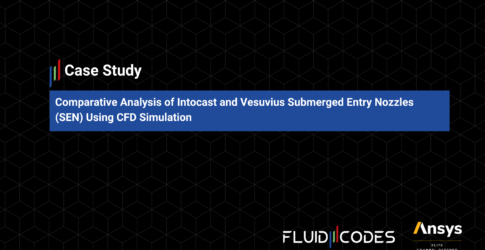Simulation, Modeling & Analysis Solutions for Energy
The increasing worldwide need for reliable energy at a reasonable cost, combined with growing environmental concerns, has brought energy science and engineering into the global spotlight. Companies are challenged to improve existing power generation technologies, improve energy intensity, reduce energy use, and develop innovative new solutions that balance demand, cost, and environmental priorities.
Applying engineering simulation early in product and project development enables cost-effective ways to evaluate new concepts, faster and with greater frequency than with traditional prototyping and testing methods.
Energy-based projects benefit from the high-fidelity, full functionality, and multidisciplinary capabilities of engineering simulation software. ANSYS has an established leadership position in the energy and related industries. Its solutions are being employed in energy production and power generation projects – including renewable (wind, solar, fuel cells, hydropower, ocean & tidal wave, nuclear, fossil fuels (coal, oil, and gas), as well as energy reduction and efficiency projects. ANSYS engineering simulation for energy expansion across product and process design, pollution reduction and control, carbon reduction and separation, improved fuel efficiency, reduced packaging weight, new fuel development, and meeting energy efficiency and regulatory requirements.
Simulation for Coal Fired Power Plants
Coal remains an integral part of the global energy mix, primarily for coal-fired thermal power plants used to generate electricity. There are environmental concerns and tightening regulations related to emissions produced from burning coal. However, coal producers and utility companies drive to modernize old plants and use advanced pollution control devices to reduce emission and capture greenhouse gases. Engineering simulation is helping technology development projects with the goal to transform coal into cleaner burning fuel.
For many years, engineers and designers in the coal industry have relied on engineering simulation for power generation technologies from Ansys to make coal production systems and processes both cleaner and safer. Ansys suite of software supports coal related applications by providing simulation for power generation technologies including— heat transfer and exchange, combustion, chemical reaction, emission control and reduction, CO2 separation and capture. The applications cover equipment for coal mining, development of mine ventilation and safety systems, burners and furnaces, steam generator, pollution reduction (including Sox, Nox & Mercury) and control systems, engineering SCR and SNCR systems, SO2 scrubber, gasification, coal to liquid, and chemical looping.
Enviroment
Protecting and improving the quality of our environment requires innovative design solutions that meet the increasing demand for sustainable and green technologies — while complying with more-stringent government regulations aimed at reducing the overall carbon footprints. These issues as referred to environmental stewardship are significant to many engineers and companies for a variety of industries.
Engineers and companies in many fields work to understand and reduce the environmental impacts of producing and distributing energy in a number of ways: analyzing pollutants at their source, studying how they are dispersed, and developing new technologies that control and reduce the effects of these pollutants on both humans and the natural environment.
By significantly reducing the time and costs associated with this analysis, engineering simulation solutions from ANSYS have become the industry standard. The technology applies computational methods to evaluate new products and concepts, design new manufacturing and power generation products and processes, and create overall improvements that optimize energy outputs – all while minimizing environmental impacts.
Engineering simulation for environment stewardship from ANSYS enables energy engineers to build and analyze virtual models as well as investigate more design options and what-if scenarios than ever before. The added insight and understanding gained from these studies lead to reliable technologies that use resources more efficiently, reduce pollutants, and minimize effluents and other waste – without the need for oversizing and over specification.
Because ANSYS offers a full range of multiphysics capabilities, equipment designers and engineers can take a system-level approach to their environmental challenges, creating broad-based simulations that incorporate complex fluid mechanics with structural, thermal, electromagnetic and reaction physics.
Engineering simulation solutions in general and CFD for air pollution technologies and CFD for water and wastewater technologies from ANSYS are used to address environmental challenges in a number of industries, including, oil and gas water and wastewater, power generation, chemical and petrochemical processing, mining and material processing, and clean coal technologies such as gasification, carbon separation and sequestration. ANSYS solutions can aid in modeling and designing these and other environmental applications to help companies meet their sustainability and environment stewardship goals:
- Air and water pollution control equipment
- Filters, cyclones, bag collectors, separators and precipitators
- Recycling and waste management systems
- Spillways, rivers, estuaries and erosion control systems
- Fish dams, storm weirs and flood control technologies
- Chillers, scrubbers and spray towers
- Exhaust plumes and pollutant dispersion systems
- Waste reduction, treatment and incineration technologies
- Effluent discharge systems and runoff in waterways
Nuclear
Today, solutions from ANSYS are applied across the entire engineering and design process of the nuclear power lifecycle: mining and processing, plant engineering and construction, fuel systems, thermo-hydraulic systems, balance of power, spent fuel disposal and regulatory compliance.
Specific applications for ANSYS engineering simulation software include CFD for nuclear reactor safety applications, structural mechanics for nuclear power design: seismic studies, design of reinforced concrete materials, piping and pressure vessels, welding processes, components, stress and fatigue analysis, containment, nuclear reactor safety, drop testing. Additional applications are CFD for nuclear applications such as boiling and heat transfer systems, steam generation spent-fuel processing. ANSYS SCADE is used for various aspects of instrumentation & control including reactor protection systems, human system interfaces and safety systems.
The ANSYS CFD for nuclear reactor safety application used are integrated environment along with structural mechanics for nuclear reactor design facilitates a common workflow. This is augmented with web-based engineering knowledge and data management solutions designed to address the special needs of nuclear engineers. Engineering simulation tools are used to perform explicit dynamic, linear and nonlinear structural mechanics, fluid mechanics, and electromagnetic studies.
To address the stringent quality requirements of the nuclear industry, ANSYS has well-documented development processes and verified software releases. The comprehensive, best-in-class software solutions comply with NQA-1 standards for developing software for the nuclear industry, including ANSYS Workbench, ANSYS Fluent, ANSYS CFX and ANSYS Mechanical.
Power Generation
As global demand has increased for a balanced energy mix that combines conventional and renewable sources — and as environmental regulations have tightened regarding emissions and greenhouse gases — the power generation industry has made its own advances in protecting the environment while meeting ever increasing demand. Power generation and utility companies are turning to advanced technology and innovation to reduce overall costs and incorporate new energy sources that decrease environmental impact. Today, global power generation is occurring via an array of diverse technologies, including heated fluids (chemical, combustion and nuclear fission), kinetic energy (wind, wave and hydro), direct conversion of chemical energy (fuel cells) and light energy (photovoltaic).
Engineering simulation for power generation adds value to engineering organizations by significantly reducing the time and cost of designing, optimizing, troubleshooting and repairing equipment. CFD for power generation and structural mechanics software for power generation from ANSYS enable these activities to occur in a virtual environment that combines ease of use with the advanced multidisciplinary technologies required by complex power generation equipment and associated processes. As global pressures mount, engineering simulation enables the industry to respond quickly by evaluating new designs and concepts, retrofitting existing plants, modifying equipment and processes, designing for industry standards, and increasing compliance with environmental regulations.
For decades, engineers have been using structural, fluid, and electronic engineering software from ANSYS to address the complex fluid flow, heat transfer, electromagnetic, contact, rotodynamic and thermal problems associated with power generation equipment and processes. As an industry leader, ANSYS engineering simulation for power generation offers a breadth of engineering simulation tools that meet diverse engineering and design requirements — spanning electronic and heat generation technologies, plant design, and component engineering for gas- and hydro-powered turbines, pollution control devices, and other critical power generation technologies.
ANSYS solutions provide the power generation industry with a comprehensive virtual modeling tool that supports critical capabilities:
- Design of emission control systems for coal-fired power plants (NOx, SOx, mercury, CO2)
- Upgrades and next-generation designs for nuclear reactors (fuel systems, thermohydraulic technologies, spent fuel processes)
- Efficiency and reliability improvements for turbines (combined-cycle, cogeneration, gas/steam, hydropower, tidal, wind)
- Design of combustion and power generation equipment (low-NOx burners, boilers, furnaces, separators, scrubbers, SCRs, NSCRs)
- Modeling of vibration, fatigue and thermal stress in welded components, piping systems, connections, tanks, reactors and pressure vessels
- Design of wind power systems including turbine blades, components, electronic systems and towers
- Development of solar collection panels and storage systems
- Design of hydropower plants and surrounding waterways
- Analysis to support appropriate siting for wind and other renewable energy technologies, onshore and offshore
Renewable Energy
Renewable energy encompasses an incredibly diverse array of innovative technologies used in power generation. From traditional and new resources – such as biomass, water, wind, solar, fuel cells, tidal and wave, and hydropower – renewable energy is playing an ever-increasing role in the global share of electricity generation, as both energy producers and consumers seek to increase deployment of renewable energy.
ANSYS enables engineering and research organizations develop new renewable energy equipment and improve the reliability and performance of existing systems. From testing for the electrochemical performance of a fuel cell stack to optimizing the design of biomass reactors and photovoltaic collectors, ANSYS solutions help speed the development process and bring renewable technologies rapidly to market. By minimizing the time, money and other resources invested in physical prototypes and testing, software from ANSYS helps improve the reliability of renewable energy systems and reduce the unit cost of energy generated from various technologies.















